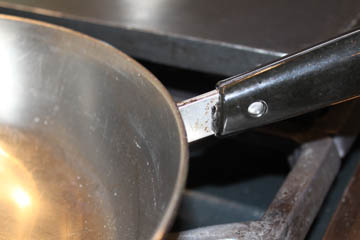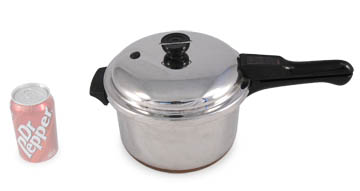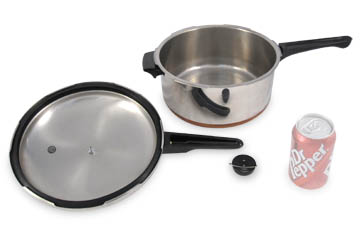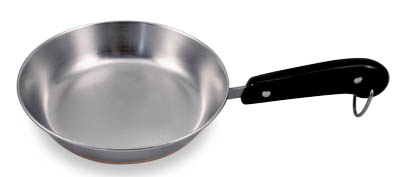I came across a question recently about overheated Revere Ware:
How to remove a gray stain on interior of Revere ware Copper bottom stainless steel 7inch fry pan
The gray stain was caused by heating the pan for over 5 minutes after the boiling water in it was boiled away because I was momentarily (5+ minutes) distracted away from the cooking range.
Is there a method and a special compound/solution which I can use to restore the appearance to its nearly new shine instead of the dull gray look? Is the pan still usable in its present state? Will there be release of any metallic toxins because of the overheating of the pan in its dry state?
I’ve also had people contact me directly with the same problem and concerns about any ill health effects.
To answer her last question first, it is worth noting that it is unlikely that anything related to the stainless steel will cause health problems. I have friends that are nervous about stainless steel because it has chromium in it, but the type of chromium used in stainless steel, chromium III, which provides the corrosion and discoloration resistance stainless steel is known for, is completely unlike the very deadly hexavalent chromium made famous by the film Erin Brockovich. In fact, chromium III is required by the body in trace amounts for proper digestion of sugars and fats.
In terms of the health of the cookware, it is always a bad idea to heat a pan without anything in it for an extended period of time, because this will likely warp the bottom of the pan, effectively ruining it.
To determine an effective repair for any discoloration, I set out to duplicate the problem.
Heating the pan without anything in it for a good 15 minutes didn’t cause any discoloration at all, but it had a pretty harsh affect on the copper bottom.
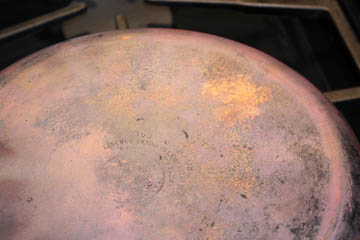
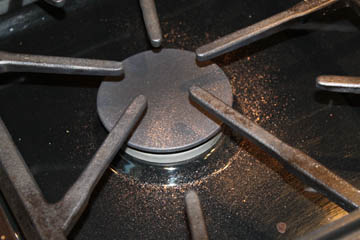
The extreme heat caused little pieces of the copper bottom to flake off and made the bottom rough to the touch.
Next I tried the experiment with some water in the pan, let the water boil off and heat for a good 10 minutes after the water was gone.
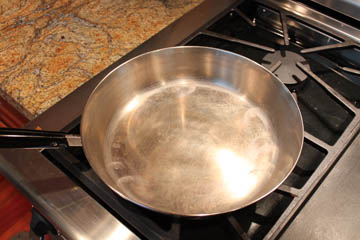
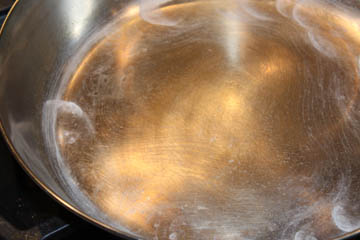
This time there were burned on hard water stains and some iridescent discoloration. As we don’t have particularly hard water where I live, I suspect this would be much worse where there was very hard water, and probably the cause of the discoloration in question. I have gotten pans in such shape from thrift stores and the solution below also did wonders on them.
While any warping caused by such heating will likely be permanent, the stains and discoloration on the inside of the pan are fairly easy to correct: simply scrub well with a Scotch Brite pad (never use steel wool or SOS pads) and then polish with some Bar Keepers Friend. Looks much better. It is important to note that a Scotch Brite pad should NOT be used on the outside of the pan as it will dull the finish. The inside of any pan will become dulled anyways from use, so a Scotch Brite pad won’t hurt it any worse.
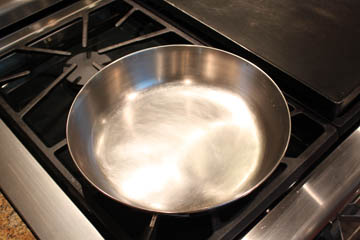
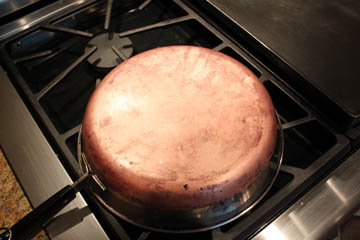
The bottom was more difficult to polish; I tried Bar Keepers Friend and copper polish, but the roughened surface due to the over heating made it more difficult to get good results.
There is one more danger to overheating pans; the Bakelite handles can break down at high enough temperatures. This particular test resulted in some slight breaking down of the Bakelite material where it touched the metal.
